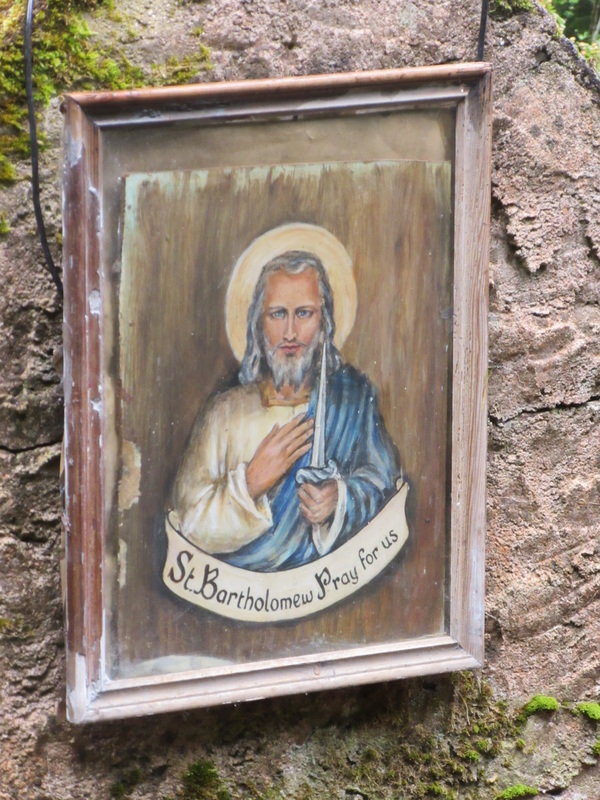It was wet – both overhead and underfoot. When I first arrived, there were only four and I was told that one drank from the well but one should take the water from the flow of water over the rocks having left the well enclosure as it is there that the blind man is reputed to have stumbled and wiped his eyes with the water and regained his sight.
By seven, there were 25 – 30 present. Most appeared to know many present so I expect that the majority were local. The five joyful mysteries were recited followed by a man from the locality thanking all for attending and giving some history of the well.
The well is located on private lands (Mr John Arnold who campaigned against the post office closure and regularly writes in the Evening Echo). The bridge was constructed about twenty years previously. Prior to that those visiting the well travelled down an old mass path from the main road up by the adjoining cross. The mass path would have been used historically by locals to attend the local church but would have fallen into disuse with the construction of the roads. One man present, who was resident in the locality for 40 years, recalled clearing the overgrowth from the path to access the well on the pattern day.
There was some thought as to whether the celebration at the well was carried out on seven (or maybe nine) days as a ‘rogation’.
There is a poem/song which includes reference in the first verse to the blind man who gained sight at the well.
The well is understood to come from a deep spring as the height and temperature of water tends not to vary much with the seasons. The well enclosure was constructed in around 1900 upon the direction of Fr. Barry – a priest who is buried in the grounds of the local church and is apparently well known for his deeds. A mason’s name is on a plaque at a nearby well (I cannot recall the mason’s name but it may have been Greaney or similar) and it is assumed that he also constructed the enclosure.
There is no known explanation as to why the well is called after St Bartholomew – he being one of the apostles, then known as Nathaniel. He headed east to Armenia where he was burned alive and so martyred. He is the patron saint of butchers and so his image generally has a butcher’s knife.
The date of celebration of St. Bartholomew was 4th September but was brought back to 24th August with the Gregorian Calendar.
I was unsure as to which came first – whether the well was named in honour of St. Bartholomew after the name of the village or whether the village (and associated horse fair) were named after the saint.
The well is located in a glen. It is thought to possibly have pre-christian origins as many such traditions were encouraged, adopted and Christianised by the church.
It was an evening where I learnt much but also realised that there is very much more to learn. My inquisitiveness as to the Christian adoption of pagan and pre-Christian traditions remains and is even strengthened.





